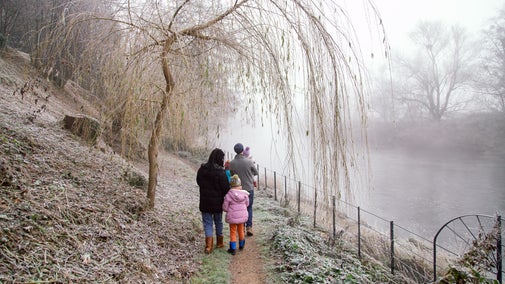Hughenden's Monument walk
Oxfordshire, Buckinghamshire & Berkshire
This is a short 2-mile linear return walk with moderate hill climbs that takes in the monument at Hughenden. A special gift from Mary Anne to her husband Benjamin Disraeli, the monument was commissioned in honour of Disraeli's father. Overlooking Hughenden estate, the view from the monument is one of the best in the area. To help you to follow this walk, please look out for the orange waymarker arrows.
Near to
HughendenStart point
Start at the visitor welcome kiosk. Grid Ref SU860955Trail information
Caution traffic
Some sections of the walk feature lanes and roads. Take care when crossing roads or walking along lanes on this walk.
More near here
Woodcock Wood walk at Hughenden
On this leisurely 1.2 mile walk, you'll loop around typical Chiltern farmland and woodland. Enjoy the peace and quiet of Woodcock Wood before heading back along 'Coffin Path'.

Boundary walk at Hughenden
Explore beautiful woodland, open parkland, farmland and a rare chalk stream on this energetic 4-mile circular walk that runs close to the estate boundary.

Get in touch
Our partners

We’ve partnered with Cotswold Outdoor to help everyone make the most of their time outdoors in the places we care for.
You might also be interested in
Walking
Explore some of the finest landscapes in our care on coastal paths, accessible trails, woodland walks and everything in between. Find the best places to walk near you.

Walking in Oxfordshire, Buckinghamshire and Berkshire
From gentle strolls for little legs to longer hikes through the rolling Chiltern hills, these are some of the best walks in Oxfordshire, Buckinghamshire and Berkshire.

Cotswold Outdoor: our exclusive walking partner
Learn about the National Trust’s ongoing partnership with Cotswold Outdoor. Find out how they help us care for precious places and the exclusive discount available for National Trust supporters.

Staying safe at National Trust places
The special places in National Trust care sometimes come with a few risks for visitors, be it coastline or countryside. Find out how to keep safe throughout your visits.

Follow the Countryside Code
Help to look after National Trust places by observing a few simple guidelines during your visit and following the Countryside Code.

Britain’s 100 Favourite Walks with Julia Bradbury
From the wild landscape of Hadrian’s Wall in Northumberland to the famous chalk sea-stacks of Old Harry Rocks in Dorset, discover some of Britain’s favourite walks.

The estate at Hughenden
Explore the parkland on one of three colour-coded walks, with its carefully designed views, rare chalk stream and medieval church.



